Recent Articles
Popular Makes
Body Types
10 Top Cars with Driver Assist Features
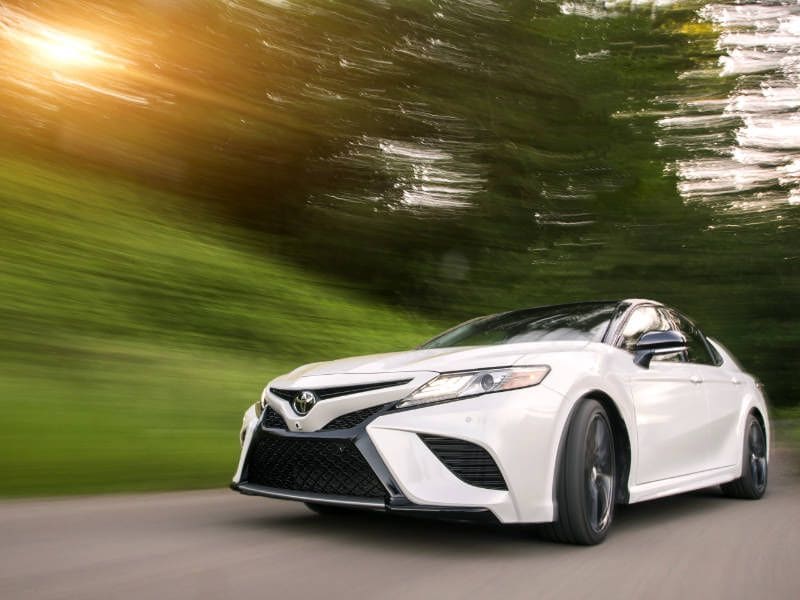
2018 Toyota Camry XSE driving front ・ Photo by Toyota
Shoppers take note: What we've got here are some of the industry's top cars with driver-assist features, and not necessarily the cars with the top driver-assist features. That's because, as you might guess, the most futuristic technologies are usually found on the most expensive new cars. Now, the entries here are packed with high-tech safety technologies, but we avoided the luxury-brand cars to focus on the top choices for more real-world buyers. And besides, in some cases, it's the mainstream vehicles that have the advantage in safety content. Just remember that, regardless of how much technology your car has, the most important way to stay safe on the road is to pay attention yourself.
2017 Honda Civic
Consider the first of our top cars with driver-assist features, the 2017 Honda Civic. Compacts don’t get much more mainstream than the Civic, yet the Honda Sensing package, available even on the entry trim, bundles adaptive cruise control, forward-collision warning, collision-mitigation braking, lane-departure warning, lane-keeping assistance, and road-departure mitigation. Nor are those the only driver-assistance features offered by the Civic. Also in the mix are the Honda LaneWatch blind-spot system, rain-sensing wipers, and a standard multi-angle rearview camera. Customers can benefit in another way, too, since both the sedan and the new five-door hatchback body styles can be ordered with these technologies. As for the Civic coupe, that can supply the rearview camera, LaneWatch, lane-keeping assistance, and adaptive cruise control.
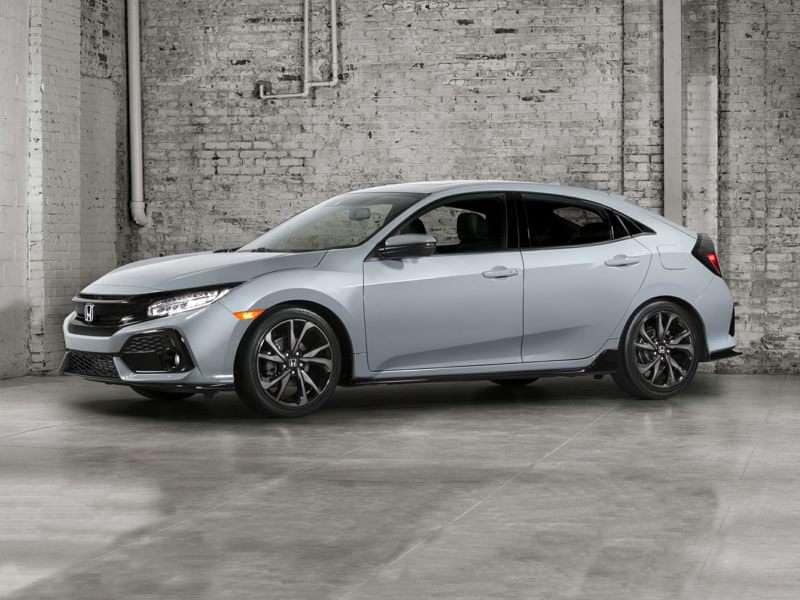
Photo by Honda
2017 Subaru Impreza
The 2017 Subaru Impreza is a strong rival to the Honda Civic, thanks to its own specific safety package. For the Impreza, the automaker’s EyeSight technology relies on both forward- and rear-facing cameras to enable adaptive cruise control, pre-collision braking, and a lane-departure/lane-keeping system. A blind-spot monitor with rear-cross traffic is then a stand-alone option and the Impreza also furnishes these technologies for both sedan and five-door hatchback models. However, the Impreza also raises the bar with reverse automatic braking, steering-responsive headlights, and automatic high beams. Further notable for the Impreza is something that most of our top cars with driver-assist features can’t match: Subaru’s symmetrical all-wheel drive, which is standard on all Impreza trims.
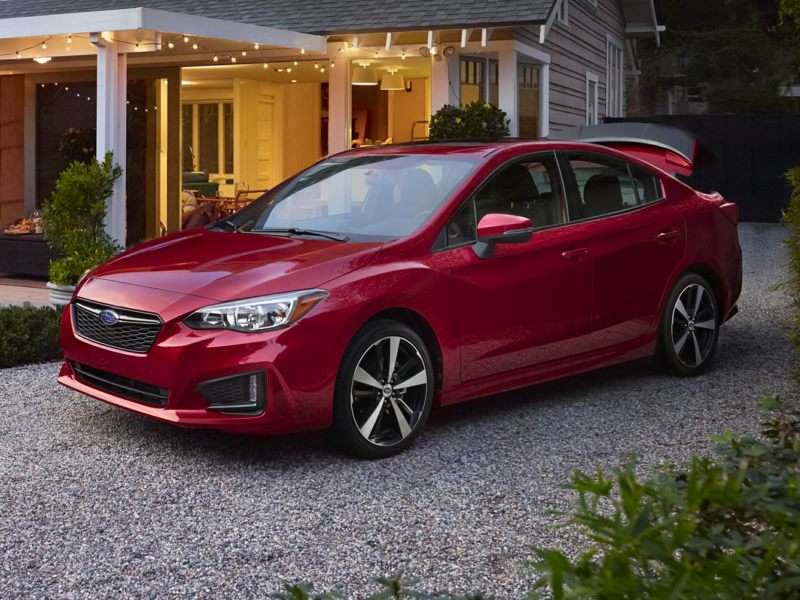
Photo by Subaru
2017 Chevrolet Spark
The 2017 Chevrolet Spark is among the top cars with driver-assist features for urban owners, since its sub-subcompact dimensions make it the ideal for life in the city. The Spark, for instance, brings a standard rear-view camera and three key options that are often missing from its rivals: Forward-collision alert; lane-departure warning; and rear parking sensors. Then again, high-tech advantages are a staple for the Spark, which also showcases a 4G LTE mobile WiFi hotspot plus both Android Auto and Apple CarPlay smartphone integration. Plus, although the Spark has room for all that in its cabin, along with 10 standard airbags, it’s just 143.1 inches long — about a foot and a half shorter than a typical subcompact.
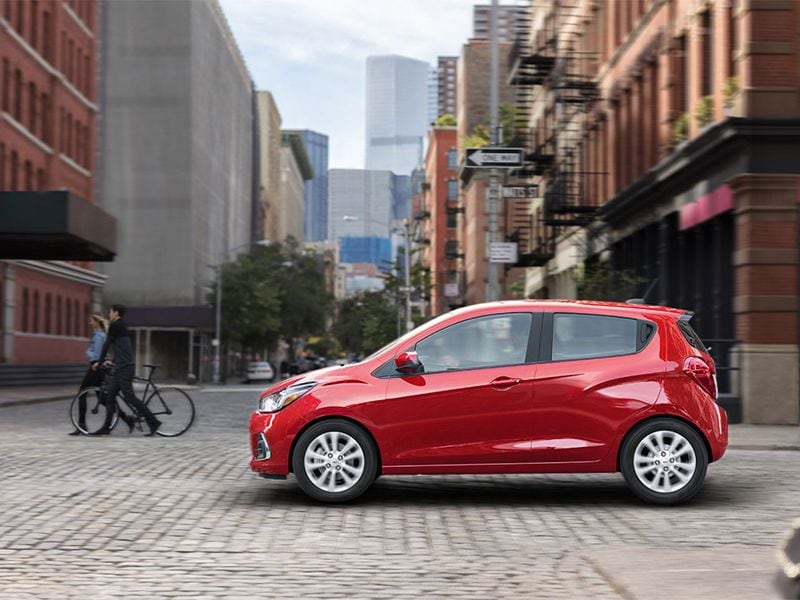
Photo by Chevrolet
2017 Toyota Yaris iA
Toyota dealerships sell a number of the top cars with driver assist features, starting with the 2017 Toyota Yaris iA. This subcompact sedan benefits from a new strategy from the automaker, which is significantly increasing the amount of standard safety content across the lineup. As a result, every iA model comes standard with a rear-view camera and a Toyota Pre-Collision System. That latter feature is laser-based, and it combines both forward collision alert and a forward automatic-braking function. Further filling out the list of upscale standard equipment in the iA is a display-audio system with a seven-inch touchscreen, voice recognition, Bluetooth for hands-free calling and audio streaming, six speakers, and interfaces for Pandora, Aha, and Stitcher Internet radio.
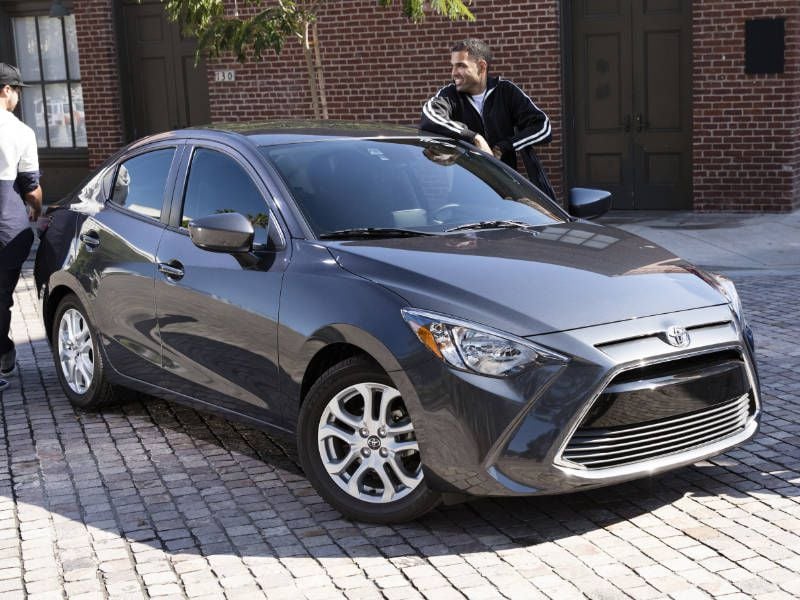
Photo by Toyota
2017 Ford Fusion
The 2017 Ford Fusion leads off the top cars with driver-assist features from the midsize class. Naturally, the Fusion checks in with the sort of safety measures you’d expect, like a rear-view camera, lane-keeping system, blind-spot information system, rear-cross traffic alert, adaptive cruise control, rain-sensing wipers, reverse parking sensors, and a pre-collision system with pedestrian detection. A difference-maker for the Fusion, though, is the available Enhanced Active Park Assist System. This setup can automatically steer the car into parallel or perpendicular-parking spots, while prompting the driver to manage the gas, brake, and gear shifter. For driver assistance with saving fuel, customers also can opt for the high-efficiency Fusion Hybrid or Fusion Energi plug-in hybrid.
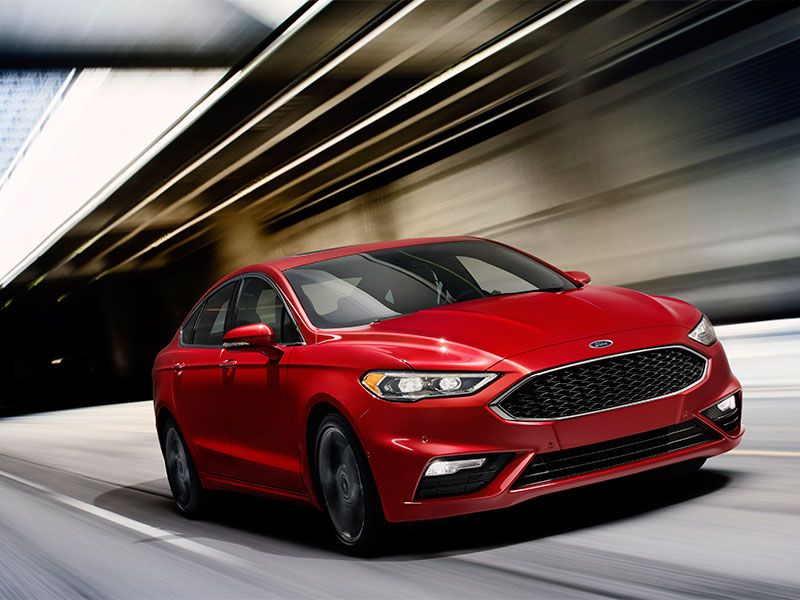
Photo by Ford
2017 Honda Accord
The Honda Sensing package is offered on the brand’s high-volume midsize sedan as well, and that gives the 2017 Honda Accord the kind of protection found only in the top cars with driver-assist features. To be exact, the Accord offers Sensing technologies that include adaptive cruise control, collision-mitigation braking, lane-keeping assistance, and road-departure mitigation: Separately, Honda’s LaneWatch blind-spot system, a multi-angle rearview camera with dynamic guidelines, automatic high beams, and rain-sensing wipers are available. Like the Civic, the Accord also provides many of these safety resources in a sporty coupe model, and the Civic and Accord both can deliver Android Auto and Apple CarPlay smartphone integration. Meanwhile, like the Ford Fusion, the Accord has an available hybrid edition.

Photo by Honda
2017 Mazda Mazda6
All of the top cars with driver-assistance technology have an obvious focus on occupant safety. But some, such as the 2017 Mazda Mazda6, put the same emphasis on being fun to drive. So the Mazda6 does carry quite a range of safety resources, including lane-departure warning, lane-keeping assistance, a blind-spot monitor, rear cross-traffic alert, full-speed automatic-forward braking, adaptive cruise control, forward collision alert, and automatic high beams. Next, the Mazda6 adds available premium features, such as a traffic-sign recognition system and a head-up display that projects key vehicle info onto the windshield, where it’s easy for the driver to see. The car then seals the deal for drivers with a peppy Skyactiv engine, a sophisticated suspension setup, and Mazda-style reflexes.
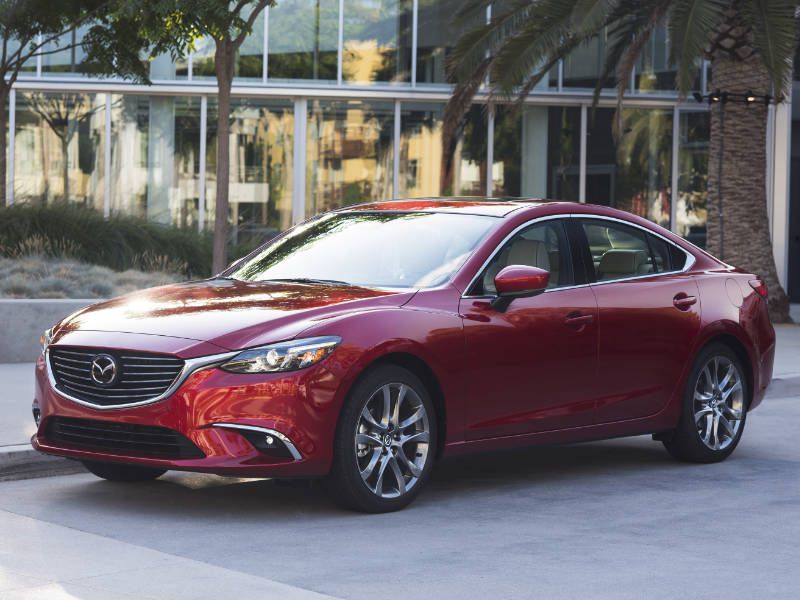
Photo by Mazda
2017 Nissan Altima
Backed by exclusive features, the 2017 Nissan Altima also stands out from the top cars with driver-assistance technology. Well, technically speaking, it’s the “2017.5” Altima lineup that gets the spotlight today: Nissan’s midsize sedan already came with a standard rearview monitor, and after an update midway through the 2017 model year, all Altima trims welcomed forward emergency braking and “Predictive Forward Collision Warning” as standard content. An evolution of traditional forward collision warning systems, the Nissan technology can “see” not just the vehicle directly ahead of the Altima, but also the one ahead of that. Additional driver-assistance options for the Altima are a blind-spot monitor, rear cross-traffic alert, adaptive cruise control, and a 360-degree “AroundView” monitor.
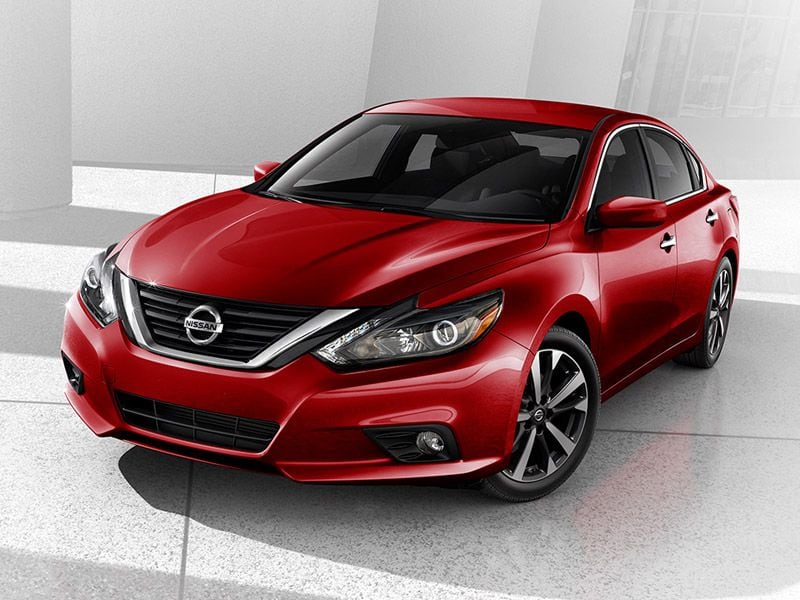
Photo by Nissan
2018 Toyota Camry
The top cars with driver assistance technology also include the country’s top-selling car, the Toyota Camry. In fact, it’s been the best-selling car in the United States for 15 years in a row, and the all-new 2018 Toyota Camry looks well positioned to keep that streak alive. No doubt helping matters: Every 2018 Camry is equipped with a standard Toyota Safety Sense-P package that bundles a pre-collision system, pedestrian detection, adaptive cruise control, lane-departure alert, lane-keeping assistance, and automatic high beams. Want more safety measures? Available for the Camry are a blind-spot monitor, rear cross-traffic alert, and rear sonar sensors with automatic rear braking. Needless to say, a rear-view camera system is standard for all Camry trims.
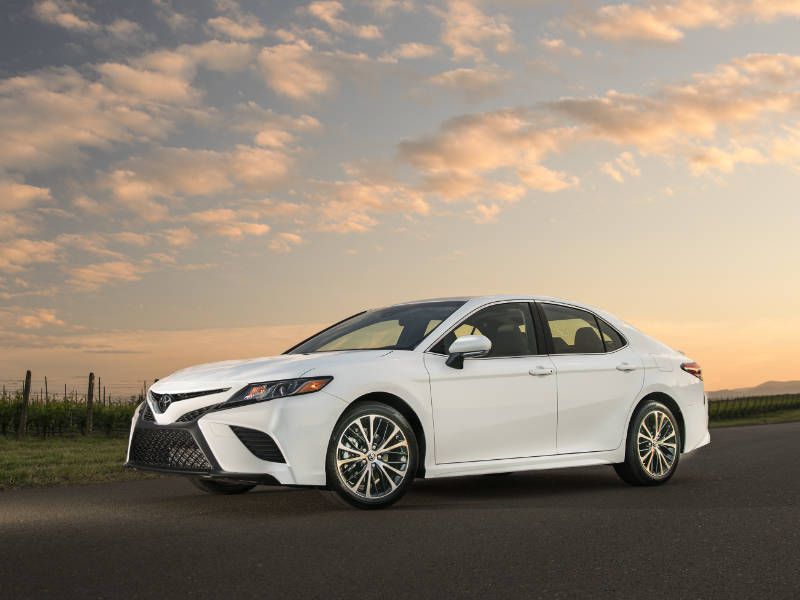
Photo by Toyota
2017 Chrysler 300
Turning to the best cars with driver-assist features in the full-size segment, the 2017 Chrysler 300 is a popular choice — and for good reason. With the 300’s SafetyTec Plus bundle, driver’s enjoy assistance from a lane-keeping system, lane-departure alert, forward collision warning, automatic forward braking, adaptive cruise control, automatic high beams, rain-sensing wipers, front and rear parking sensors, and more. Separately, a blind-spot monitor with rear cross-traffic alert can be ordered, and to assist with traction — and fuel-efficiency — the 300 also offers an innovative all-wheel-drive system. If the maximum grip isn’t needed, it can disconnect the front axle from the engine for higher-efficiency travel (Remember, the 300 is sold in a standard rear-wheel-drive configuration). A rear-view camera, of course, is standard across the 300 lineup.
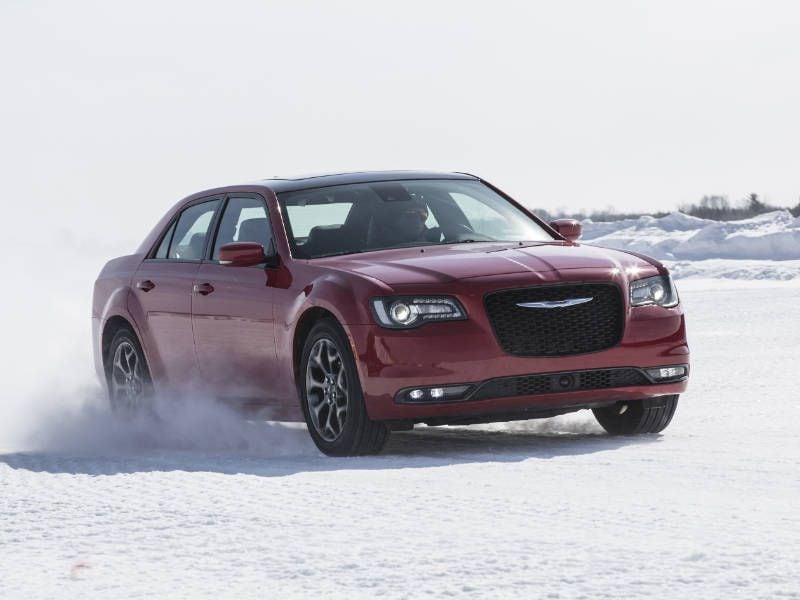
Photo by Fiat Chrysler Automobiles